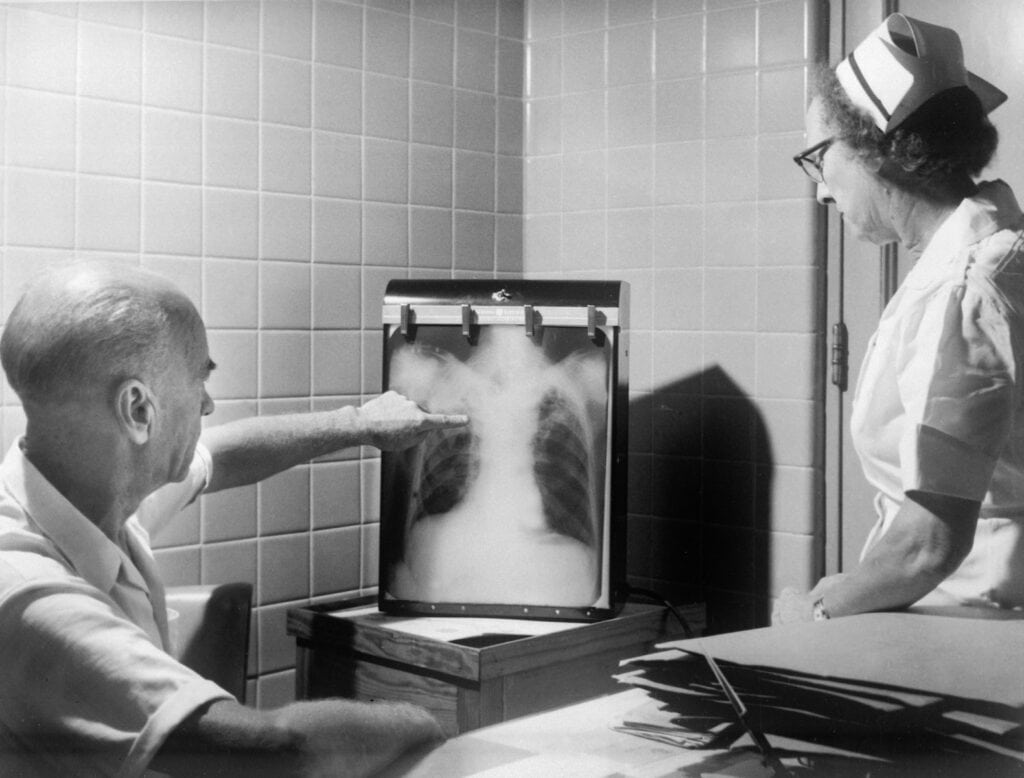In today’s modern world, allergies and respiratory conditions have become increasingly prevalent, affecting millions of individuals worldwide. Whether it’s seasonal allergies, asthma, or more severe respiratory conditions, these ailments can significantly impact our daily lives and overall well-being. Being aware of the causes, symptoms, and treatments associated with allergies and respiratory conditions is essential for managing them effectively.
Whether you’re undergoing tests for the first time or seeking a deeper understanding, this article will help you decipher your lung function test results, especially if you suffer from asthma.
What is a lung function test?
Lung function tests are vital diagnostic tools used to assess the health and functionality of our respiratory system. These tests provide valuable insights into how well our lungs are working and can help diagnose various respiratory conditions. However, interpreting the results of these tests can be complex and overwhelming without proper guidance. In this comprehensive guide, we aim to demystify lung function test results, empowering you with the knowledge to understand the data.
When should you have a lung function test?
A lung function test, also known as a pulmonary function test (PFT), may be recommended in various situations to evaluate your respiratory health. Here are some common scenarios where a lung function test may be advised:
Respiratory Symptoms
If you are experiencing persistent respiratory symptoms such as shortness of breath, coughing, wheezing, or chest tightness, a lung function test can help assess the underlying cause, which could be allergies, and determine the extent of any potential lung dysfunction.
Asthma
Lung function tests are commonly used in the diagnosis and ongoing management of asthma. These tests can help measure lung capacity, airflow, and response to bronchodilators, aiding in the diagnosis, severity assessment, and monitoring of asthma symptoms.
Chronic Obstructive Pulmonary Disease (COPD)
Lung function tests are essential in diagnosing and monitoring COPD, a chronic respiratory condition characterized by progressive airflow limitation. These tests help assess lung function and determine the severity of airflow obstruction.
Preoperative Evaluation
Before undergoing major surgery, especially involving the chest or lungs, a lung function test may be performed to assess your lung capacity and reserve. This helps evaluate your ability to tolerate anesthesia and surgery and can guide perioperative management decisions.
Occupational or Environmental Exposures
If you are regularly exposed to certain substances or environments known to have respiratory risks (e.g., dust, chemicals, allergens), a lung function test may be recommended as part of occupational or environmental health assessments to monitor any potential lung damage.
Pre-Employment or Fitness Evaluations
In some occupations or sports activities that require a certain level of respiratory fitness (e.g., firefighters, professional athletes), a lung function test may be required as part of pre-employment or fitness evaluations to ensure adequate respiratory function.
How to read lung function test results?
Reading lung function test results can be a complex task, but with a little guidance, you can gain a better understanding of what the numbers and measurements mean. Here are some key steps to help you read and interpret lung function test results:
Consult the report
Obtain a copy of your lung function test report from your healthcare provider. This report will contain important measurements and values that need to be analyzed.
Understand the parameters
Familiarize yourself with the different parameters measured in lung function tests. Common measurements include Forced Vital Capacity (FVC), Forced Expiratory Volume in one second (FEV1), Peak Expiratory Flow (PEF), and Total Lung Capacity (TLC). Each parameter provides valuable information about different aspects of lung function.
Compare with predicted values
Lung function test results are typically compared to predicted or normal values. Predicted values are based on factors such as age, gender, height, and ethnicity. By comparing your actual results to these predicted values, you can assess if your lung function falls within the expected range.
Assess the percentage of predicted
Lung function test results are often expressed as a percentage of predicted values. For example, if your FEV1 is 80% of the predicted value, it means your lung function is 80% of what is considered normal for someone with similar characteristics. Higher percentages indicate better lung function, while lower percentages may suggest impairment.
Look for abnormalities or patterns
For example, a reduced FEV1/FVC ratio may indicate obstructive lung diseases like asthma or chronic obstructive pulmonary disease (COPD), while reduced TLC may suggest restrictive lung diseases like pulmonary fibrosis. Identifying patterns can help in diagnosing specific respiratory conditions.
Seek professional interpretation
It is crucial to consult with a healthcare professional, such as a pulmonologist, respiratory therapist or allergist, to interpret your lung function test results accurately. They can provide a comprehensive evaluation, take into account your medical history and symptoms, and guide you in understanding the significance of the results in the context of your overall health.
Conclusion
Interpreting lung function test results may seem daunting at first, but armed with the knowledge and guidance provided in this comprehensive guide, you can gain a clearer understanding of your respiratory health. By analyzing parameters such as Forced Vital Capacity (FVC), Forced Expiratory Volume in one second (FEV1), and Peak Expiratory Flow (PEF), you can assess the functionality and efficiency of your lungs.
Remember, comparing your results to predicted values and identifying abnormalities or patterns can provide valuable insights into your respiratory condition. However, make sure you consult with a healthcare professional for accurate interpretation and further evaluation.
Get in touch today with our expert team for more help!



